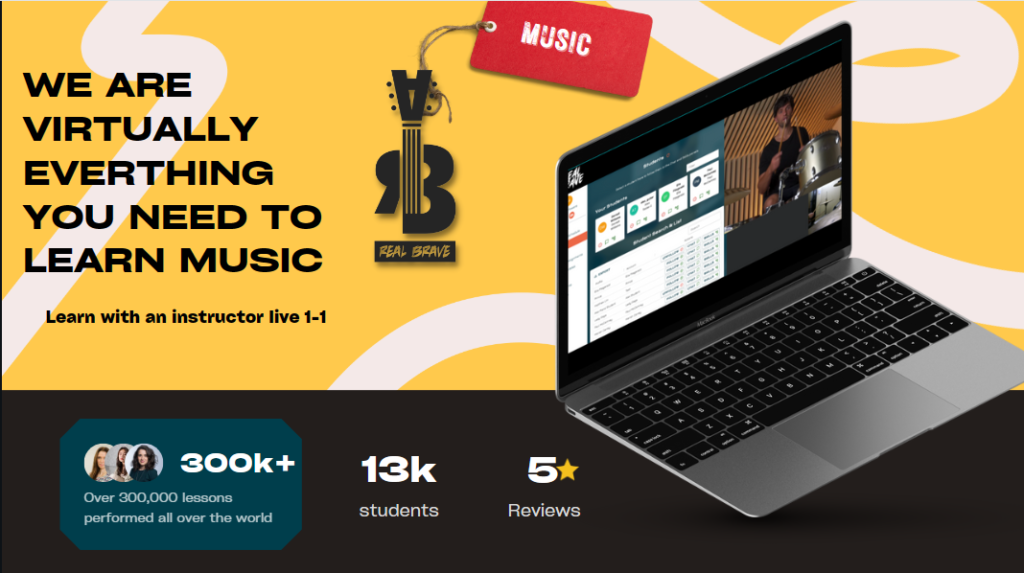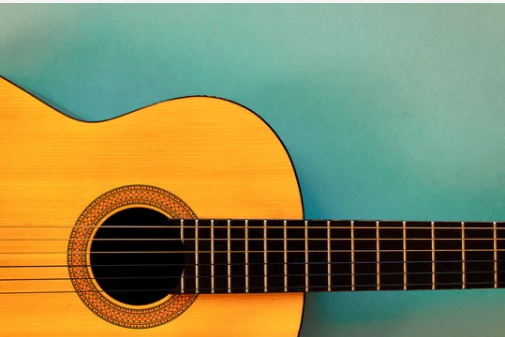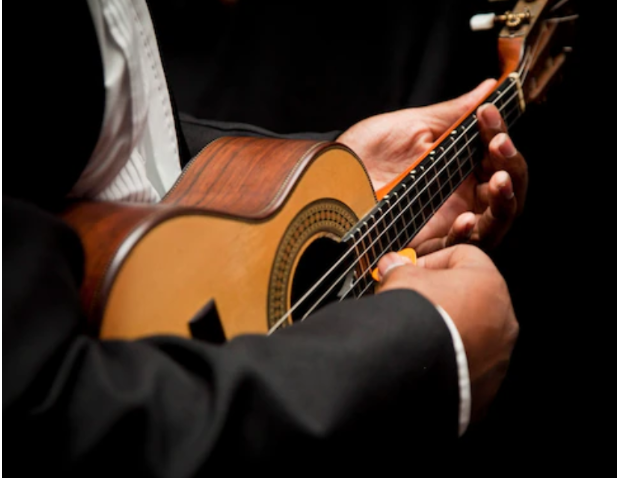5 Easy Essential Scales Every Beginner Guitarist Should Know

In my music studio as a music teacher, one of the key lessons I emphasize to my students is the importance of focusing on the most valuable guitar scales early on. With so much to learn and limited time, it’s crucial to concentrate on the scales that will give you the best return on your investment. In this blog, I’ll walk you through five essential scales that will greatly enhance your guitar playing.
The guitar scales I’ve chosen are not only versatile but also widely used across various genres of music. Mastering these scales will open up a world of possibilities and help you progress quickly. Moreover, some of these guitar scales are relative to each other, meaning they share the same notes, allowing you to learn them more efficiently.
1. G Major Scale
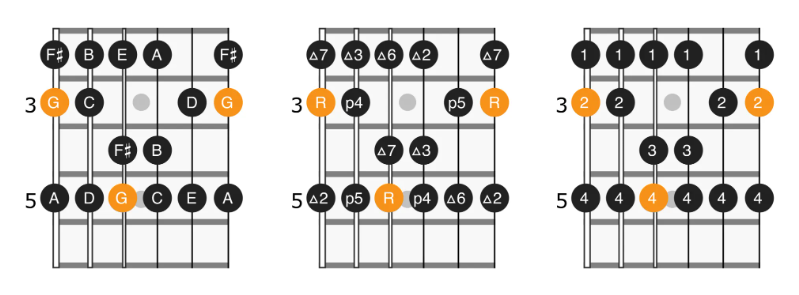
The G Major scale is a seven-note diatonic scale that includes the notes G, A, B, C, D, E, and F#. It’s often one of the first major scales that guitarists learn due to its frequent use in a wide range of music. When practicing the G Major scale, you should start by learning the pattern in its first position on the fretboard. This involves playing from the 3rd fret of the low E string up to the 5th fret of the high E string. Each note in the scale has a specific interval relative to the root note (G), and understanding these intervals is key to mastering the scale. For example, the interval between G and A is a whole step, while the interval between B and C is a half step.
Learning the G Major scale not only helps you play in the key of G, but it also builds a foundation for understanding other major scales, as they all follow the same pattern of intervals. This guitar scale is crucial for playing chords, melodies, and improvisations in the key of G.
2. E Minor Pentatonic Scale
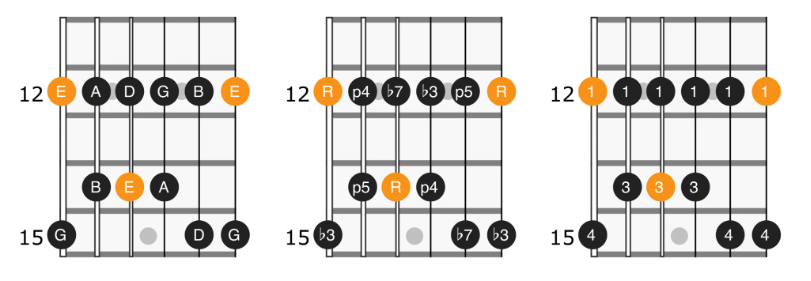
The E Minor Pentatonic scale is a simplified version of the E Minor scale, omitting the 2nd and 6th degrees. It includes the notes E, G, A, B, and D, making it a five-note scale (hence “pentatonic”). This guitar scale is incredibly versatile and forms the basis for many rock, blues, and jazz solos.
To practice the E Minor Pentatonic scale, start in the open position on the fretboard, where the open strings E and A are part of the scale. The pentatonic pattern is easy to memorize because it doesn’t contain any half steps, making it ideal for beginners. The relative simplicity of the E Minor Pentatonic scale allows you to quickly begin creating your melodies and solos, even if you’re new to the guitar. Additionally, because it shares notes with the G Major scale (its relative major), learning both scales together can enhance your understanding of how scales are interconnected.
3. C Major Scale
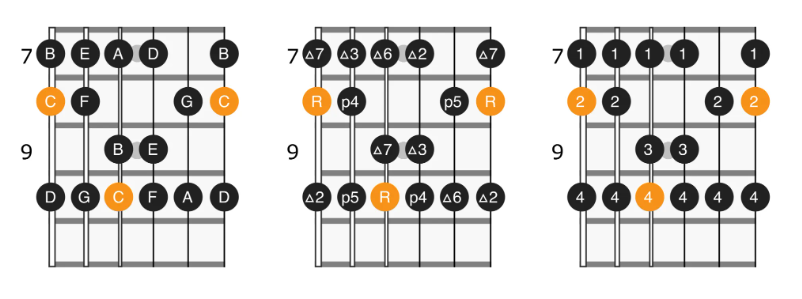
The C Major scale is unique because it’s the only major scale that consists entirely of natural notes: C, D, E, F, G, A, and B. There are no sharps or flats, making it a fundamental scale for understanding music theory. The C Major scale is essential for playing in the key of C and serves as a foundational scale for many genres of music.
When practicing the C Major scale, focus on the first position, starting at the 8th fret of the low E string and working your way up the fretboard. The intervals in the C Major scale follow the same pattern as those in the G Major scale, so once you’ve mastered one major scale, others will become easier to learn. Understanding the C Major scale will also help you navigate other guitar scales and chords that are closely related to the key of C, such as A Minor, which is the relative minor of C Major.
4. A Minor Pentatonic Scale
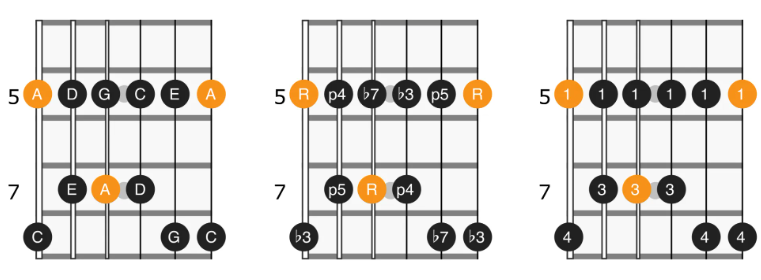
The A Minor Pentatonic scale is perhaps the most popular scale among guitarists, particularly in blues and rock music. It includes the notes A, C, D, E, and G, omitting the 2nd and 6th degrees of the A Minor scale. The scale’s simple structure makes it easy to learn and use in improvisation.
To practice the A Minor Pentatonic scale, start in the 5th position on the fretboard, which allows you to play the scale comfortably without stretching too far. This position is also where the A Minor and C Major scales overlap, as they share the same notes (A Minor is the relative minor of C Major). The A Minor Pentatonic scale is especially useful for soloing because it avoids the dissonance that can occur with full diatonic scales, making your solos sound more melodic and pleasing.
5. D Major Scale
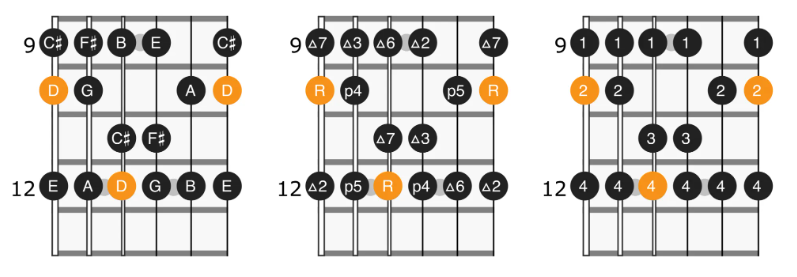
The D Major scale is known for its bright and uplifting sound, making it a popular choice for many songs. It includes the notes D, E, F#, G, A, B, and C#. Like the other major scales, the D Major scale is a seven-note diatonic scale that follows a specific pattern of whole and half steps.
When learning the D Major scale, begin in the second position on the fretboard, where the root note D is found on the 5th fret of the A string. This guitar scale is particularly useful for playing in the key of D, and its pattern can be easily transposed to other keys once you’re comfortable with it. Understanding the D Major scale will also help you with chord progressions in the key of D and improve your ability to play melodies that fit within this key.
Final Thoughts
As you embark on your guitar-playing journey, these five essential guitar scales will be your guiding light. They provide a solid foundation, allowing you to explore a wide range of musical styles and genres. Invest time in mastering these guitar scales, and they will greatly enhance your musical capabilities, setting you up for long-term success as a guitarist.
Remember, practice makes perfect. Start slow, focus on accuracy, and gradually increase your speed as you become more comfortable with each guitar scale. Happy playing!
If you’re interested in learning an instrument, at Real Brave, we offer an incredible experience like no other place in music lessons for kids and adults by guiding them from the beginning stages of getting to know an instrument all the way through performing for family and friends on stage. Our instructors come from all over the world, bringing extensive experience on a wide range of instruments. Click below and book a free lesson with us!
Author: Daniel Powers Jr, the founder of Real Brave™, serves as the chief inspiration to thousands of students in the Real Brave music instruction program. He’s also the visionary behind PracticePad™, an online platform for live one-on-one online music lessons, lesson tracking, and scheduling. Beyond his entrepreneurial pursuits, Daniel leads a non-profit organization that provides formerly homeless children with access to music education, making a profound impact on their lives. His unwavering dedication to music, innovation, and education continues to inspire individuals to reach their fullest potential while creating positive change in communities. Follow Real Brave on all the socials:
youtube.com/@realbraveinc
twitter.com/realbraveinc
https://www.tiktok.com/@realbraveinc
instagram.com/realbraveaudio
facebook.com/realbraveinc
